In the Amazon, communities next to the world’s most voluminous river are queuing for water
CAREIRO DA VARZEA, Brazil (AP) — As the Amazon drought rages on, public authorities in Brazil are scrambling to deliver food and water to thousands of isolated communities throughout a vast and roadless territory, where boats are the only means of transportation.
Across Amazonas state, which has a territory the size of three Californias, 59 out of its 62 municipalities are under state of emergency, impacting 633,000 people. In the capital Manaus, Negro River — a major tributary of the Amazon — has reached its lowest level since official measurements began 121 years ago.
One of the most impacted cities is Careiro da Varzea, near Manaus by the Amazon River. On Tuesday, the municipality distributed emergency kits using an improvised barge originally designed to transport cattle.
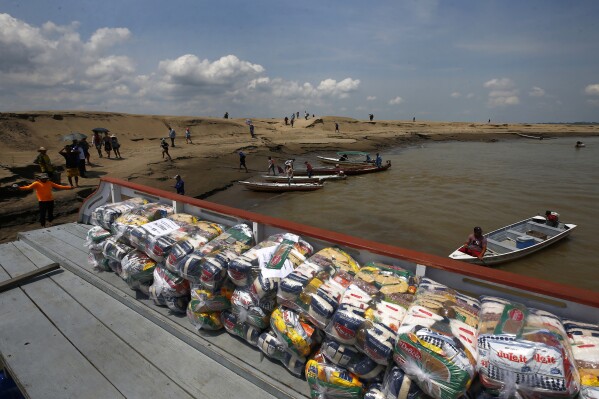
Packages with food for riverside communities due to the ongoing drought sit on a dock, in Careiro da Varzea, Amazonas state, Brazil, Oct. 24, 2023. (AP Photo/Edmar Barros, File)
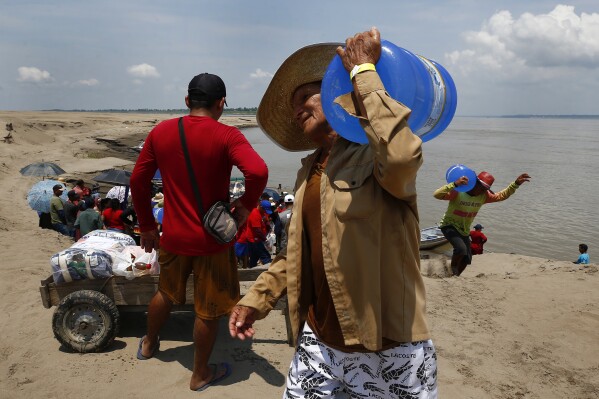
A resident of a riverside community carries a container of drinking water from an aid distribution due to the ongoing drought in Careiro da Varzea, Amazonas state, Brazil, Oct. 24, 2023. (AP Photo/Edmar Barros, File)
The Associated Press accompanied the delivery to two communities. It docked miles away from them, requiring residents, most of them small farmers and fishermen, to walk long distances through former riverbeds turned into endless sand banks and mud.
Each family received a basic food package and 20 liters (5.3 gallons) of water, enough for just a few days but a heavy burden to carry under the scorching heat.
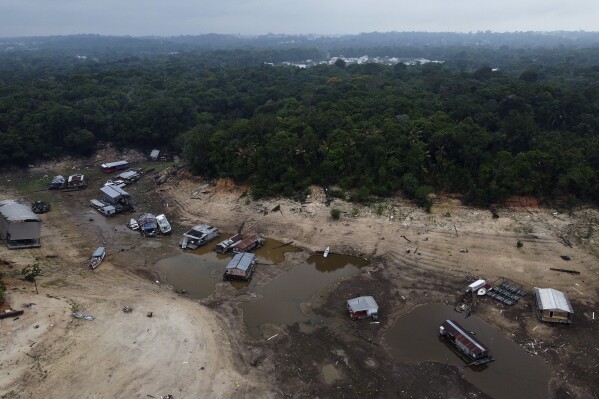 In Brazil’s Amazon, rivers fall to record low levels during drought
In Brazil’s Amazon, rivers fall to record low levels during drought
 In the Amazon, millions breathe hazardous air as drought and wildfires spread through the rainforest
In the Amazon, millions breathe hazardous air as drought and wildfires spread through the rainforest
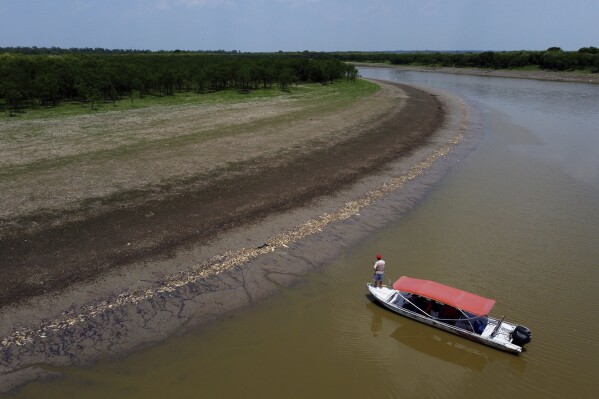 More than 100 dolphins found dead in Brazilian Amazon as water temperatures soar
More than 100 dolphins found dead in Brazilian Amazon as water temperatures soar
“I will have to carry the food package on my back for half an hour,” Moisés Batista de Souza, a small farmer from Sao Lazaro community, told the AP. He said the biggest problem is getting drinkable water. To reach the closest source demands a long walk from his house.
“Everybody in Careiro da Varzea has been affected by the drought,” said Jean Costa de Souza, chief of Civil Defense of Careiro da Varzea, a municipality of 19,600 people, most living in rural areas. “Unfortunately, people don’t have water. Some lost their crops, while others couldn’t transport their output.”
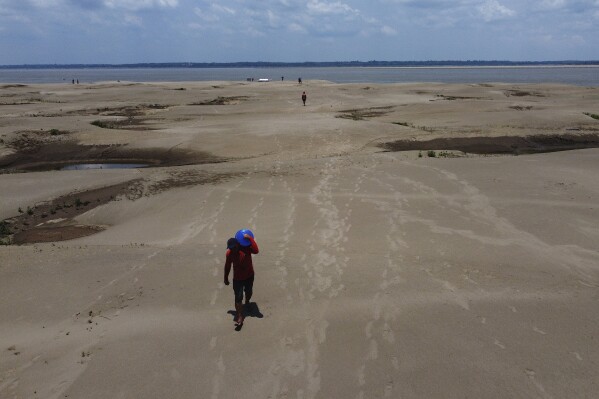
Residents of a riverside community carry food and containers of drinking water after receiving aid due to the ongoing drought in Careiro da Varzea, Amazonas state, Brazil, Oct. 24, 2023. (AP Photo/Edmar Barros, File)
Costa de Souza said the municipality will finish next week the first round of deliveries to all rural communities. Other two rounds are under planning, pending on receiving aid from state and federal governments.
Dry spells are part of the Amazon’s cyclical weather pattern, with lighter rainfall from May to October for most of the rainforest. The season is being further stretched this year by two climate phenomena: the warming of northern tropical Atlantic Ocean waters and El Niño — the warming of surface waters in the Equatorial Pacific region — which will peak between December and January.
___
AP reporter Fabiano Maisonnave contributed from Brasilia.
___
Associated Press climate and environmental coverage receives support from several private foundations. See more about AP’s climate initiative here. The AP is solely responsible for all content.
Disclaimer: The copyright of this article belongs to the original author. Reposting this article is solely for the purpose of information dissemination and does not constitute any investment advice. If there is any infringement, please contact us immediately. We will make corrections or deletions as necessary. Thank you.


